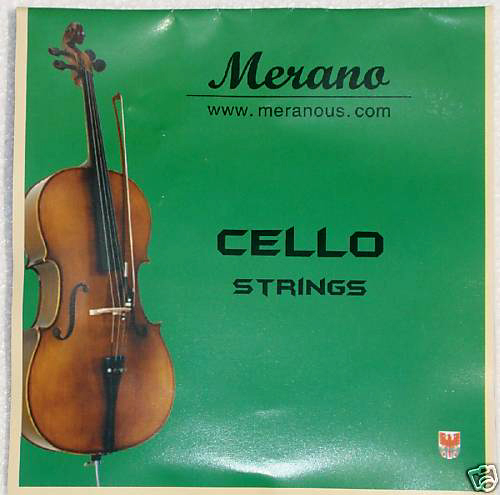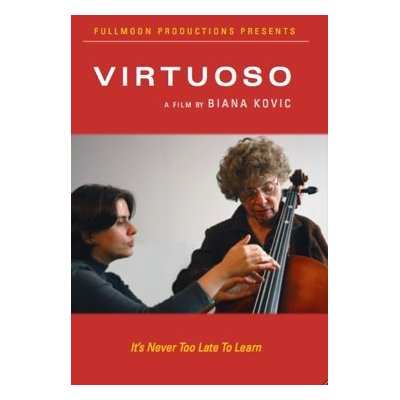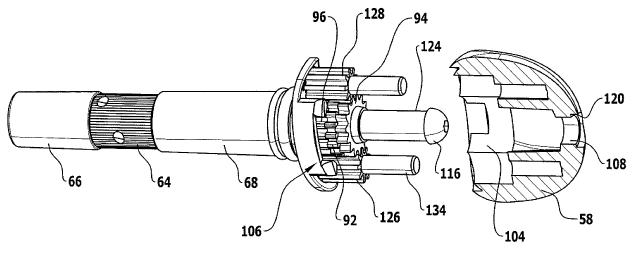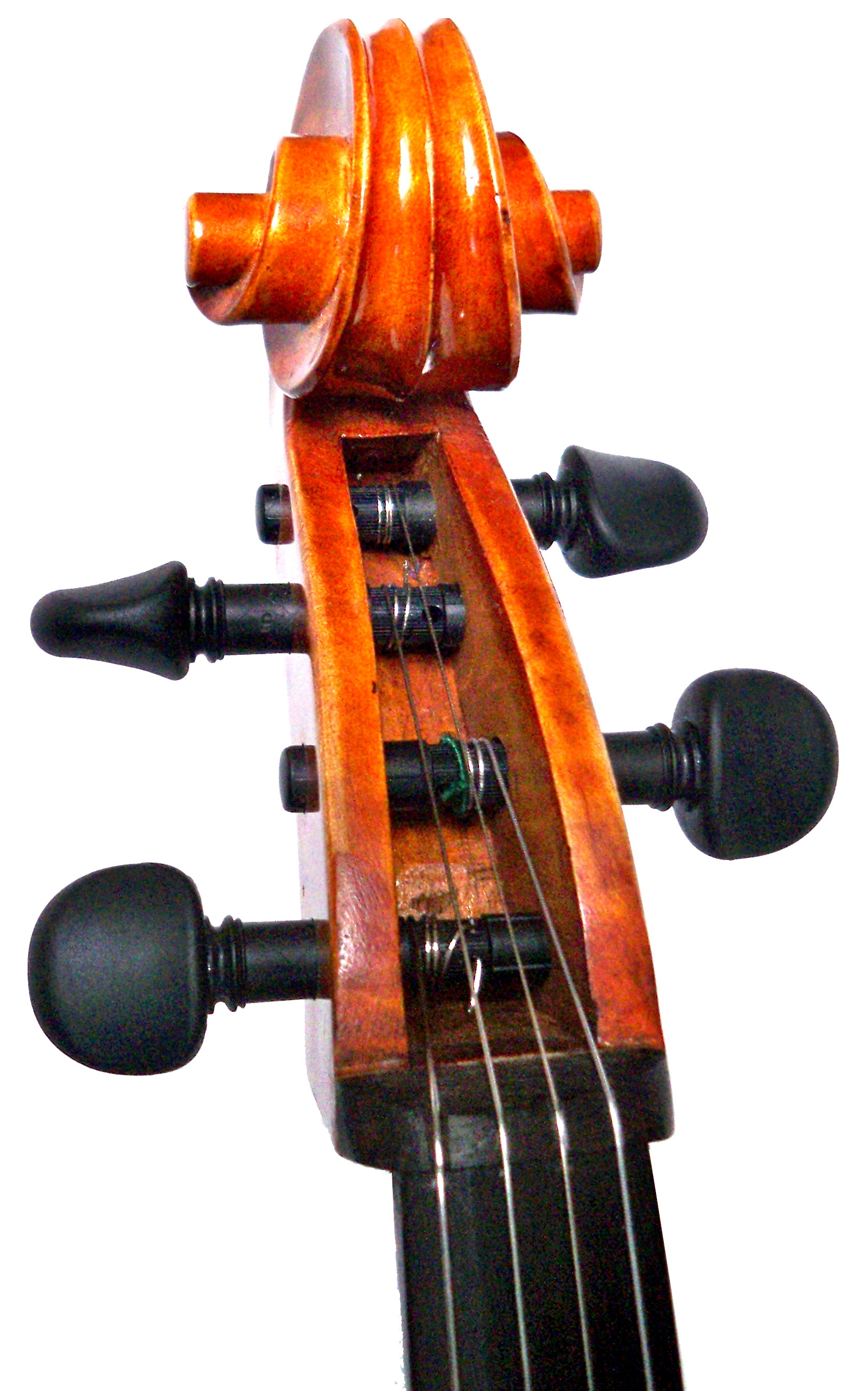When I bought the little cello, I restrung it almost immediately to viola tuning – CGDA an octave above a normal cello. This tuning has worked great for me – it seems to make the most of the acoustics of the small bodied instrument – but I was not entirely happy with the particular strings. I started out with this setup:
C – Unknown brand original 1/8 cello D string
G -Unknown brand original 1/8 cello A string
D – Spirocore 4/4 cello high E string
A – Elixir .010 plain steel guitar E string
Of these, the Spirocore string is just perfect. It responds happily to the lightest stroke of the bow and the tone is sweet and smooth. The guitar E string is shrill and metallic and requires a light and careful bowing to sound tolerable. The C and G strings, recycled from the set that came on the cello, are very thick and unresponsive. They require a heavy bow stroke to get going, especially the bottom one. Considering that the original C and G strings are even fatter, I’ve no idea how little kids are supposed to enjoy playing the thing! I hate flabby cello strings!
 So I started a series of experiments to find better strings. I figured I’d start with the string I liked the least and work from there. The A string proved to be a stubborn problem. First, I tried some classical guitar E strings – nylon wrapped with nylon. But they don’t work with a bow at all. Too smooth and slippery. I even roughed them up a bit with some fine sandpaper, but still they hardly make a peep. Fortunately they were cheap!
So I started a series of experiments to find better strings. I figured I’d start with the string I liked the least and work from there. The A string proved to be a stubborn problem. First, I tried some classical guitar E strings – nylon wrapped with nylon. But they don’t work with a bow at all. Too smooth and slippery. I even roughed them up a bit with some fine sandpaper, but still they hardly make a peep. Fortunately they were cheap!
The problem is the combination of string length and pitch. This is the high string on a viola, and the vibrating string length on even the biggest violas is 3 or 4 inches shorter than on my 1/8 cello. I bought the longest Thomastik Dominant viola A string on the chance that it might be long enough. Of course, it wasn’t. The string was into the silk several inches below the nut. But I put it on anyway to see how it sounded. Tightened up to pitch and stopped below the silk with my finger, the string bowed easily and sounded very mellow – quite unlike the shrill guitar string. So I was convinced that a nylon core string was the answer, but where to find one long enough?
I emailed a few dealers and even a national string distributor, but received no reply or a polite “I can’t help you”. I guess my requirement is so odd that’s it’s not worth their effort to think about it. Next, I did a survey of all common bowed string instruments, thinking there might be one with longer strings at the right pitch. And voila! (viola!), the Tenor Viola da Gamba has a string length just a bit longer than my cello, and the highest string is the G just below the A that I need. Super-Sensitive makes Sensicore perlon core strings for the Gamba, and they’re readily available and inexpensive. Woodwind and Brasswind carries the G1 string for only $5.42. A few days later, my A string troubles were over. The Gamba string is perfect. It’s a tad thicker than the Spirocore, bows easily and sounds sweet and mellow like the Spirocore.
Next, I turned my attention to the C and G strings. These were not as troublesome as the A string, but I hoped I might something more playable. I went through several varieties (string experiments can get expensive!). First, I bought more Sensicore Gamba strings of the lower pitches that were close to the ones I need. While the A string is perfect, the lower strings were terrible. The perlon core strings were fat and flabby – worse than the fat 1/8 cello strings.
Next, I bought a set of Helicore 1/8 cello strings, thinking they might be like the Spirocore string that I liked so well. Same problem. These rope core strings are limp and rubbery, just like the perlon core Gamba strings. I was getting frustrated. It seems you can’t judge a string by the catalog description. “Bright and responsive” may not mean what you think it means!
 Alas, serendipity won the day. When I bought my big cheap cello, it came with two sets of top-of-the-line Merano strings. I assumed these were junk and replaced them with D’Addario Prelude on the big cello. So I had all these cheapo strings lying around, and I noticed that they were pretty slender for cello strings. Maybe they might be responsive, too? I put the D and A on my little cello, and voila! (not viola!) they worked beautifully. So much for “you get what you pay for”. I still don’t know why there is such a huge variation in the thickness of strings that all play at the same pitch, but these strings are so easy to play and they sound lovely on my little cello.
Alas, serendipity won the day. When I bought my big cheap cello, it came with two sets of top-of-the-line Merano strings. I assumed these were junk and replaced them with D’Addario Prelude on the big cello. So I had all these cheapo strings lying around, and I noticed that they were pretty slender for cello strings. Maybe they might be responsive, too? I put the D and A on my little cello, and voila! (not viola!) they worked beautifully. So much for “you get what you pay for”. I still don’t know why there is such a huge variation in the thickness of strings that all play at the same pitch, but these strings are so easy to play and they sound lovely on my little cello.
One of my goals was to settle on a good combination of strings that I could easily replace when needed. Merano strings seemed a bit of an off brand, so I figured I’d try to find their equivalent in a popular brand. Super-Sensitive Red Label seemed to match the description – “Bright and responsive” – right? wrong! Sure, they were not as flabby as the Helicores or Gamba strings, but they did not match the cheapo Merano strings. There is also a Red Label high E string, that only costs about $8 (compared to $30 for the Spirocore), so I tried one of those, hoping for a less expensive alternative. The string was close, but not as nice as the Spirocore.
So for now, I have a winning string setup – a rather motley set of different strings at wildly different prices…
C – Merano 4/4 cello D string ($13 for a full set)
G – Merano 4/4 cello A string
D – Spirocore 4/4 cello high E string ($30)
A – Sensicore tenor Gamba G1 string ($5)
The moral of this story is that you can’t tell what strings will work until you try them on your instrument – and you can’t tell which will be better from the price tag or the catalog blurb. Strings have so much effect on the sound and playability of an instrument that I suspect that many a trial of several cellos or violins is really a string trial in disguise. Granted, my setup is an oddball, and maybe more unpredictable than a standard violin or cello, but I do understand now why so many cellists have mixed sets of strings. When you choose one brand for all four, the string construction will be similar for the four and you may lose out on tone or playability at one end or the other. As you go from synthetic core to steel rope core to solid steel core, the strings get brighter and thinner. The fatter, mellower strings on top work well with thinner, brighter bottom strings to yield a more balanced and consistent bowing behavior across the cello.
 No, I’m not a virtuoso yet. That’s the title of a charming little documentary film by Biana Kovic, a cellist and teacher in New York City. Biana enlisted 89 year old Matty Kahn to learn to play the cello in one month. The film tells that story, along with some side interviews about the good things that happen when older people learn to make music.
No, I’m not a virtuoso yet. That’s the title of a charming little documentary film by Biana Kovic, a cellist and teacher in New York City. Biana enlisted 89 year old Matty Kahn to learn to play the cello in one month. The film tells that story, along with some side interviews about the good things that happen when older people learn to make music.




